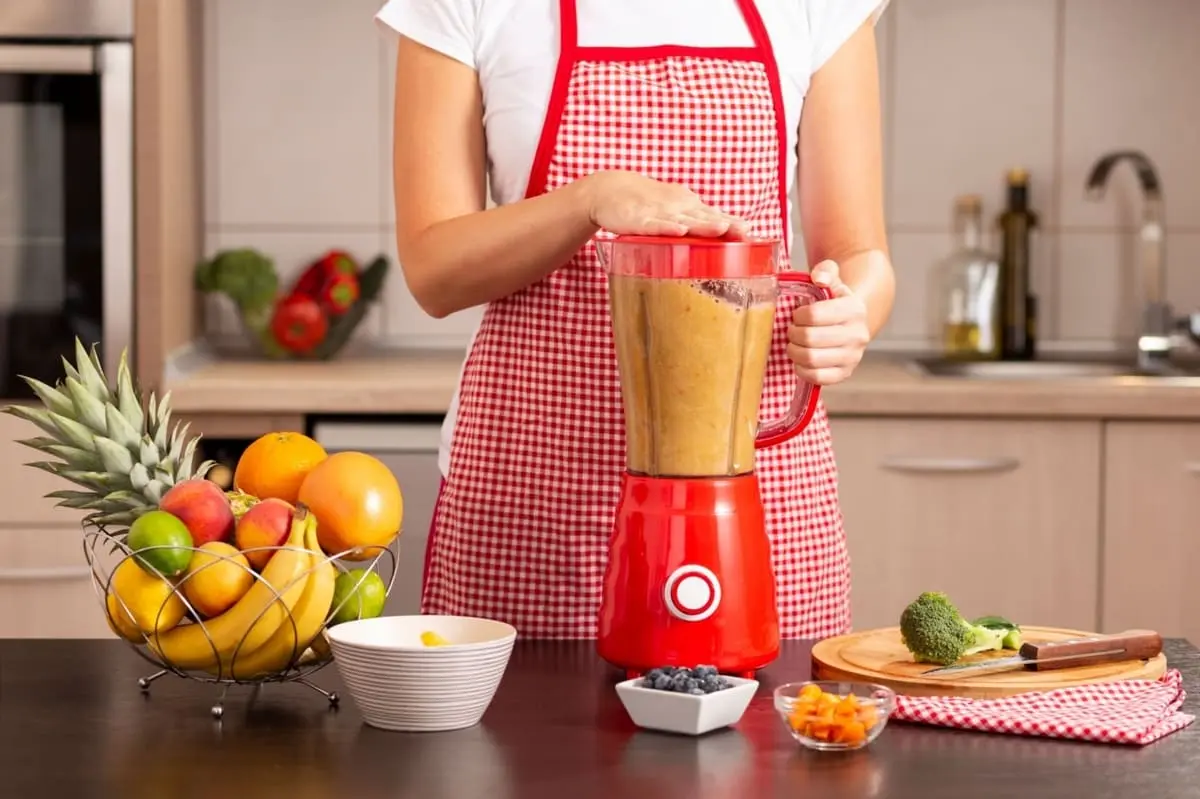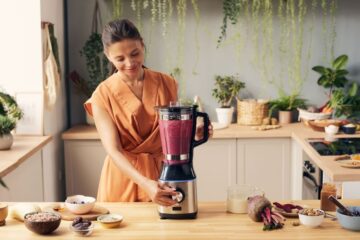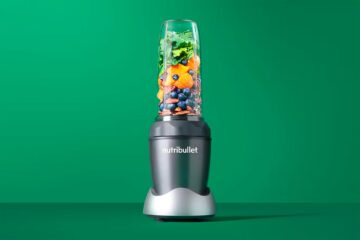Kitchenaid blenders are essential for many, providing a convenient and effortless way to blend smoothies, soups, sauces, and much more. However, with regular use, these blenders can become dirty, greasy, and unsanitary, leaving you with an unpleasant taste in your mouth and a lot of frustration. But don’t worry, cleaning your Kitchenaid blender is not rocket science, and with the right tools and techniques, you can have it sparkling clean in no time.
This article will guide you on how to clean Kitchenaid blender safely and deeply to enjoy your blends with peace of mind. From the most basic methods to the advanced ones, you will learn everything you need to know to keep your blender in tip-top shape. So let’s dive in and start making your Kitchenaid blender shine again.
Can You Wash Kitchenaid Blender In Dishwasher?
Yes, you can wash KitchenAid blender parts in the dishwasher. However, washing the blending jar, lid, and blades by hand with warm soapy water is recommended to ensure they do not become damaged in the dishwasher. It is also important to follow the care instructions provided by KitchenAid to maintain the longevity of your blender.
What Can I Use To Clean My Kitchenaid Mixer?
Here are some things you can use to clean your KitchenAid mixer:
- Damp cloth or sponge
- Mild soap
- Non-abrasive cleaners such as baking soda or vinegar
- Stainless steel cleaner for the metal parts
It’s important to avoid using harsh chemicals or abrasive cleaners, as they may damage the surface of the mixer.
How To Clean Kitchenaid Blender?
KitchenAid blenders are popular and versatile kitchen appliances that blend, mix, and puree food ingredients. Over time, they can accumulate residue, grime, and stains, affecting their performance and appearance. Cleaning a KitchenAid blender regularly is important to ensure its longevity and functionality.
Step-by-Step Guide to Clean KitchenAid Blender:
Disassembling the Blender
Unplug the blender and remove the pitcher or cup from the base. Remove the blades and gasket from the bottom of the pitcher or cup and set them aside.
Rinsing the Parts
Rinse the pitcher, cup, blades, and gasket thoroughly under warm water, removing any loose food particles or debris.
Cleaning the Pitcher or Cup
Fill the pitcher or cup with warm water and a few drops of dish soap. Place the lid on and pulse the blender several times until the water is soapy. Let it soak for a few minutes, then rinse it thoroughly under warm water.
Cleaning the Blades
Fill a bowl with warm water and a few drops of dish soap. Place the blades in the bowl and let them soak for a few minutes. Use a brush or sponge to scrub the blades, removing any built-up residue or stains. Rinse the blades thoroughly under warm water.
Cleaning the Gasket
The gasket is the rubber ring at the bottom of the pitcher or cup. Rinse it under warm water and use a brush or sponge to clean any built-up grime or debris.
Drying the Parts
Thoroughly dry the pitcher, cup, blades, and gasket with a clean towel, or let them air-dry completely before reassembling the blender.
Reassembling the Blender
Place the gasket, blades, and pitcher or cup back onto the base and plug the blender in. Your KitchenAid blender is now clean and ready for use!
How To Remove Kitchenaid Blender From Base?
To remove the blender from the base of a KitchenAid blender, you can follow these steps:
Unplug the blender
Always make sure the blender is unplugged from the electrical outlet before attempting to remove it from the base.
Release the locking mechanism
Most KitchenAid blenders have a locking mechanism that holds the blender in place on the base. You may need to press a button or lever on the base to release the lock.
Lift the blender straight up
After releasing the locking mechanism, hold the blender by the jar and lift it straight up off the base. Avoid twisting or tilting the blender, as this can cause the jar to become separated from the blade assembly.
How To Clean Vitamix Blender Blades?
To clean the blades of a Vitamix blender, add a drop of dish soap and some warm water to the blender container. Then, run the blender at high speed for about 30 seconds to a minute until the blades are thoroughly cleaned.
After that, you can rinse the container and blades with warm water, making sure to get all the soap out. You can use a soft-bristled brush or sponge to clean the blades if there are any stubborn stains or food particles. Once the blades are clean, thoroughly dry them before using the blender again.
How To Clean Kitchenaid Mixer Pasta Attachment?
To clean your KitchenAid mixer pasta attachment, detach it from the mixer and rinse it under warm water. Use a soft sponge or cloth to gently clean the surface, paying extra attention to any food particles or debris that may be stuck in the grooves or crevices.
You can also use a small brush or toothbrush to help get into the nooks and crannies. For a deeper clean, fill a bowl with warm water and a drop of dish soap, then soak the attachment for a few minutes. After soaking, rinse thoroughly and dry with a clean cloth before reattaching it to the mixer.
Tips For Maintaining A Clean Kitchenaid Blender.
Maintaining a clean KitchenAid blender is important to ensure it operates efficiently and produces smooth blends. Here are some tips to help keep your blender clean:
Clean after every use
Wipe down the outside of the blender and wash the blades, jar, and lid by hand with warm soapy water. Rinse thoroughly and let it air dry.
Use a blender cleaning solution
You can purchase a specialized blender cleaning solution or make your own by mixing 1 cup of water, 1 cup of vinegar, and a drop of dish soap in the blender jar. Run the blender on high speed for 30 seconds, then rinse thoroughly.
Avoid harsh abrasives
Don’t use steel wool, scouring pads, or harsh abrasive cleaners, as they can damage the surface of the blender.
Remove stubborn stains
For tough stains, fill the blender jar with warm water and a few drops of dish soap and let it soak for 15 minutes. Then, run the blender on high speed for 30 seconds and rinse thoroughly.
Regularly inspect the blades
If you notice any nicks or dull spots on the blades, they should be replaced to ensure they work effectively.
Is Kitchenaid Blender Jug Dishwasher Safe?
Most KitchenAid blenders are dishwasher safe, but this may depend on the specific model. It’s always a good idea to check the owner’s manual or product information for your specific blender to confirm if the jug is dishwasher safe. If dishwasher safe, it’s usually recommended to place it on the top rack for cleaning.
How To Prevent Your Blender From Smelling Bad?
To prevent your blender from smelling bad, you should wash it thoroughly after each use and remove any leftover food or residue. You can also add a few drops of lemon juice to the blender when washing it, as lemon is a natural deodorizer.
It’s also important to regularly disassemble the blender and clean it thoroughly, especially the blades and gasket, as these areas can easily trap food particles and cause odors. Store the blender in a dry place, as moisture can also contribute to bad smells. Additionally, regularly replace the blades if they are dull or damaged, which can also cause bad odors.
Overall Thoughts
Now that we have covered the information on best practices in cleaning your Kitchenaid blender, next time when you find yourself really pressed for time and still want to keep using your blenders regularly, remember to make use of some of the above techniques and always start by unplugging it from the power source.




